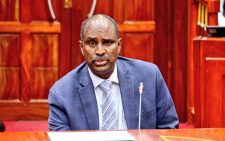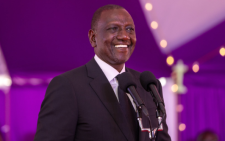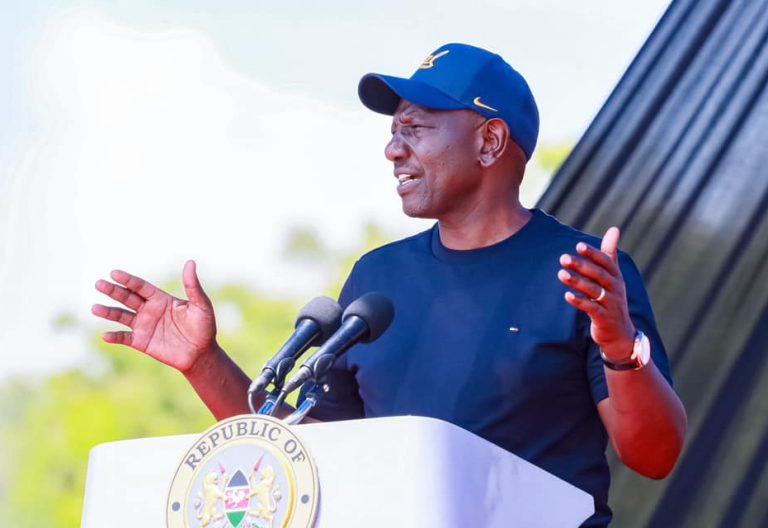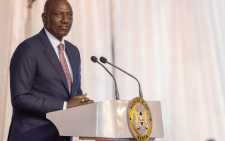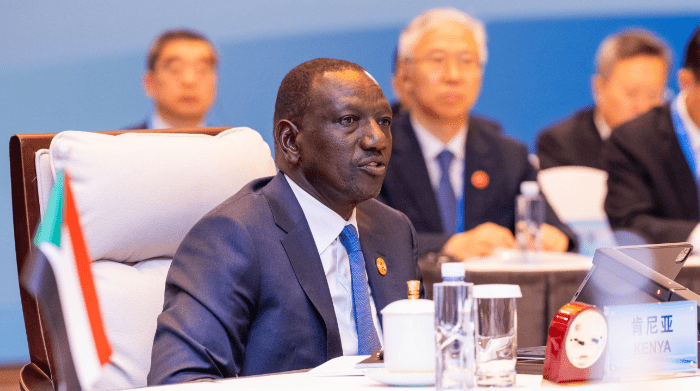Earth for All book charts 5 steps to save humanity
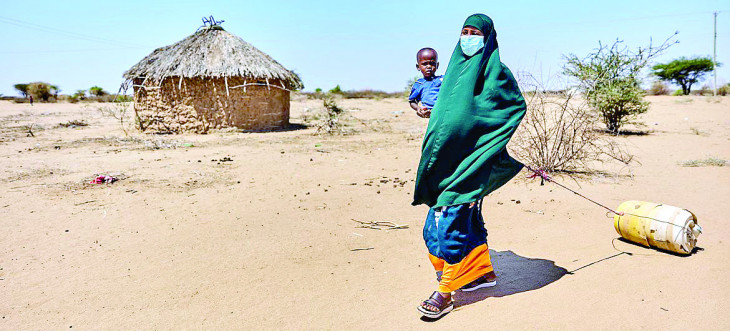
A perilous combination of climate breakdown, air pollution and biodiversity loss coupled with growing poverty, rising inequality and endless conflict is driving humanity and nature towards extinction, experts have warned.
Scientists have already warned that we are living on the brink of mass extinction due to the dominance of a single species – homo sapiens.
In its four-and-a-half billion-year history, life on Earth has endured five mass extinctions due to cataclysmic events. Today’s threat of mass extinction is due to human acts and climate change.
Now an international team of scientists and economists, in a landmark global analysis captured in a groundbreaking book Earth for All: A Survival Guide for Humanity launched today, have added their voice, warning that rising inequality in the world risks regional collapse and climate catastrophe.
The immediate former United Nations Secretary-General and Deputy Chair of The Elders, Ban Ki-moon, in a ringing endorsement of the book, said he hopes it will serve as a wake-up call to “inspire a new movement of minds and souls that are willing to save our precious humanity.”
“An extraordinary book at an extraordinary time. For today and tomorrow’s leaders. Earth for All is a must-read. This book offers a concrete, breakthrough vision on how to ensure wellbeing for all – in any country – on our infinite planet,” Ban writes in endorsing the book, adding: “Together, we can build a world that is genuinely equitable by following the 5 turnarounds – a roadmap to accelerate the realization of the Sustainable Development Goals (SDGs) in the next decade.”
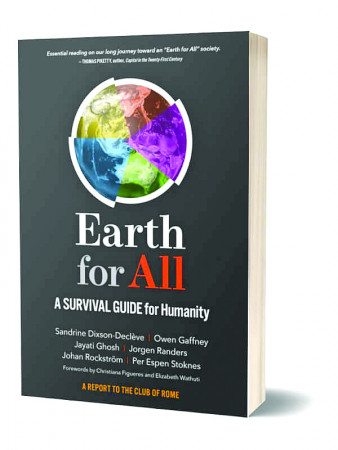
Creating The Citizen’s Fund
The book’s six authors argue for the creation of a novel financial innovation, the Citizen’s Fund, to tackle inequality, reduce greenhouse gas emissions, and provide a safety net for the most vulnerable. The fund would distribute the wealth of the global commons to all people as a Universal Basic Dividend.
The Earth4All survey on attitudes and transformation found that, among G20 countries, 74 per cent of people supported economic systems change to go beyond a singular focus on profit and growth, and instead encompass health and the planet.
The book’s launch comes ahead of two significant events, the UN General Assembly and the UN climate change convention’s COP 27. Its publication presents the results of a two-year research project, that brought together leading scientists, economists and a team of “systems dynamics” computer modellers.
Left unchecked, the rising inequality will in the next 50 years lead to increasingly dysfunctional societies, making cooperation to deal with existential threats like climate change more difficult, they warn.
However, the book’s authors say the world can still stabilise global temperatures below 2 degrees Celsius and approach an end to poverty by 2030 by enacting five “extraordinary turnarounds” that break with current trends.
Time for ‘The Giant Leap’
To achieve what the book calls “The Giant Leap”, societies would need to adopt unprecedented and immediate action across five interconnected turnarounds:
1. Ending Poverty through reform of the international financial system lifting 3-4 billion people out of poverty.
2. Addressing gross inequality by ensuring that the wealthiest 10 per cent take no more than 40 per cent of national incomes.
3. Empowering women to achieve full gender equity by 2050.
4. Transforming the food system to provide healthy diets for people and the planet.
5. Transitioning to clean energy to reach net zero emissions by 2050.
Earth for All goes further to make 15 policy recommendations with the greatest potential to accelerate these turnarounds. The recommendations include new growth models asking the International Monetary Fund (IMF) to allocate over $1 trillion per annum to poor countries for green jobs-creating investments (new “SDRs” – special drawing rights).
On trade re-regionalisation, the authors are asking rich countries and World Trade Organization (WTO) to allow local protection of fledgling industries and south-south trade in countries with less than $10.000 income per person.
They are also asking WTO to enable leapfrogging by providing intellectual property rights waivers on patented renewables and health technology. The book appeals to the expansion of the policy space, demanding rich countries cancel all debt to low-income countries.
Seeds of regional collapse
One of the book’s six authors, Prof Jorgen Randers, co-author of The Limits to Growth published 50 years ago, writes: “We are standing on a cliff edge. In the next 50 years, the current economic system will drive up social tensions and drive down well-being. We can already see how inequality is destabilizing people and the planet.”
He warns that unless there is truly extraordinary action to redistribute wealth, things will get significantly worse. We are already sowing the seeds of regional collapse. Societies are creating vicious cycles where rising social tensions, that are exacerbated by climate breakdown, will continue to lead to a decline in trust.
Randers says this scenario risks an explosive combination of extreme political destabilisation and economic stagnation at a time when we must do everything we can to avoid climate catastrophes. Earth for All builds on the common mantra from social movements calling for “Systems Change Not Climate Change” and “People Not Profit”.
The book lays out what economic systems change really means for civilization and proposes five extraordinary turnarounds that provide a framework for a fair, just and affordable economic transformation. It tackles the fierce debate between advocates for “green growth” and supporters of “degrowth” economies.
Earth for All reinforces the urgency of UN Secretary-General Antonio Guterres’ update earlier this month to the General Assembly regarding the “Our Common Agenda” blueprint for global cooperation he released nearly a year ago.
“In addition to the triple planetary crisis of climate breakdown, air pollution and biodiversity loss, and the immense suffering caused by the Covid-19 pandemic, conflicts are raging across the world,” cautioned the UN chief.
He said the ripple effects of the war in Ukraine are contributing to the surging food and energy prices, which are hitting the vulnerable developing countries the most.
Guterres painted a grim picture of “unabated and growing” global shocks and a world economy in which “developing countries are being squeezed dry” as new Covid variants again disrupt lives, throwing “the 2030 Agenda and the SDGs…further off course”.
Unabated global shocks
Meanwhile, the looming climate catastrophe highlighted in the book is “mounting by the day” as global greenhouse gas emissions are at their highest levels in human history – and rising”. And the risk of nuclear confrontation “is more acute than it has been for decades.”
Calling for urgent concerted policies to save humanity and nature from extinction, the book explores two scenarios beginning in 1980 and ending in 2100. These scenarios titled “Too Little, Too Late” and “The Giant Leap” explore how population, economies, resource use, pollution wellbeing and social tensions might change this century based on decisions made this decade.
In the first pathway, the world continues with the economic policies from the last 40 years. While the GDP continues to grow, the rich get richer while the poor fall farther behind, creating extreme inequalities and growing social tensions within and between countries.
Political division and lack of trust make it increasingly difficult to address climate and ecological risks. Global temperatures increase by about 2.5 degrees Celsius by 2100, significantly exceeding the target stipulated in the Paris Agreement.
The poorest economies face the most extreme conditions. Later in the century, around two billion people will be living in areas that are close to the limits of human habitability. All societies will be reeling from extreme heat, drought, crop failure and floods, phenomena currently being experienced in this The Horn of Africa and the Sahel region.
The authors note that if the world continues on the “Too Little, Too Late” path, the model shows declining wellbeing globally, by an average of 40 per cent in the 2050s than in the 2020s, even in wealthy nations, and suggests it will take until 2100 to eradicate extreme poverty as the poorest economies experience stagnating growth.
According to the model, the world population will peak at just under nine billion around 2050.
Earth for All co-author and director of the Centre for Sustainability at Norwegian Business School Per Espen Stoknes says: “In this scenario, the model indicates that regional societal collapse, driven by rising global tensions, food insecurity and environmental degradation, is more likely than today.”
Dysfunctional governments
Regional and global crises are often not caused by a single event like one crop failure, but by cascading failures made worse by climate change, chronically dysfunctional governments and system failures.
“We have known shocks were coming our way since 1972, and yet the response has been denial, it is now time to hold governments accountable for the future and push for strong governance models flexible enough to deal with today’s complex challenges.”
Summing up Earth for All’s clear roadmap to save humanity and nature from the real threat of extinction, Richard Heinberg, a senior fellow at the Post Carbon Institute and author of Power: Limits and Prospects for Human Survival states: “This latest, most urgent, and most carefully researched version of system science’s scenarios for our human future is essential reading for collapse preventers everywhere.
Whether its recommendations are taken up by policymakers everywhere – and whether humans are therefore able to avert worldwide ecological, economic, and social breakdown sometime during the remainder of the 21st century – is up to us all.”
